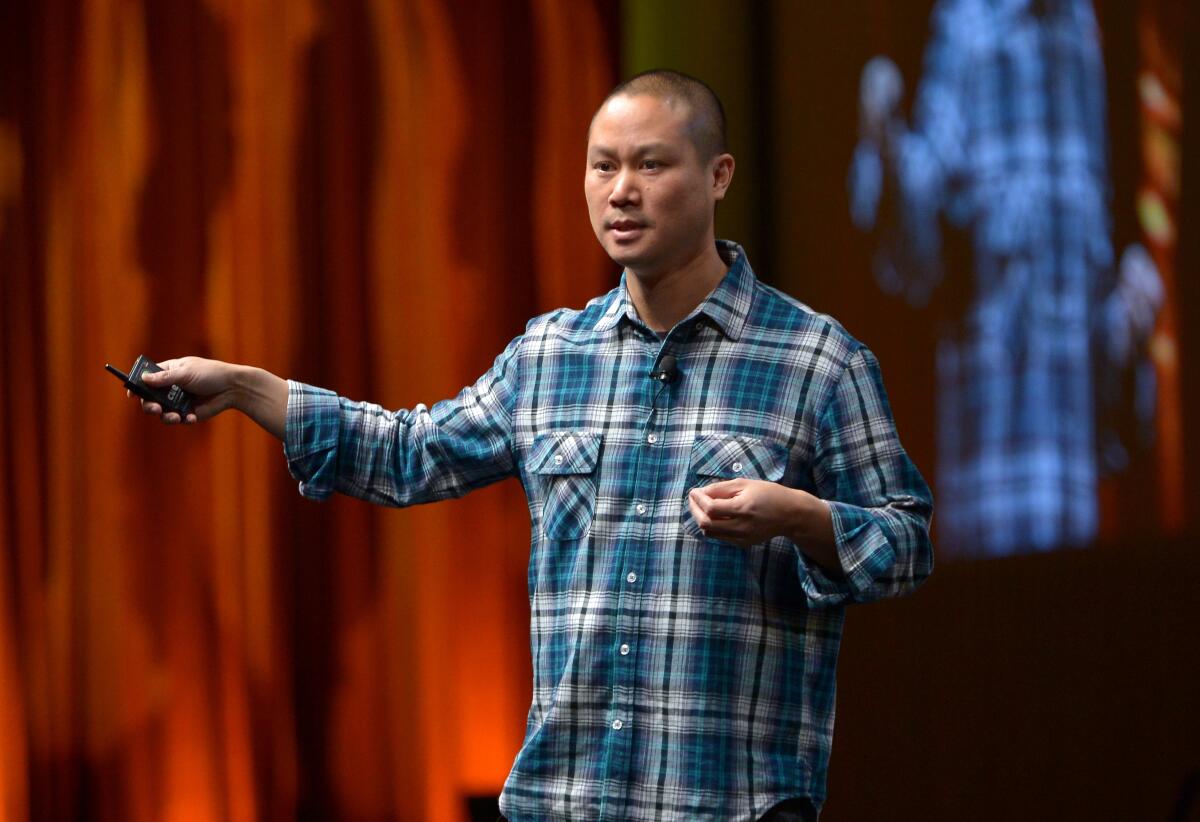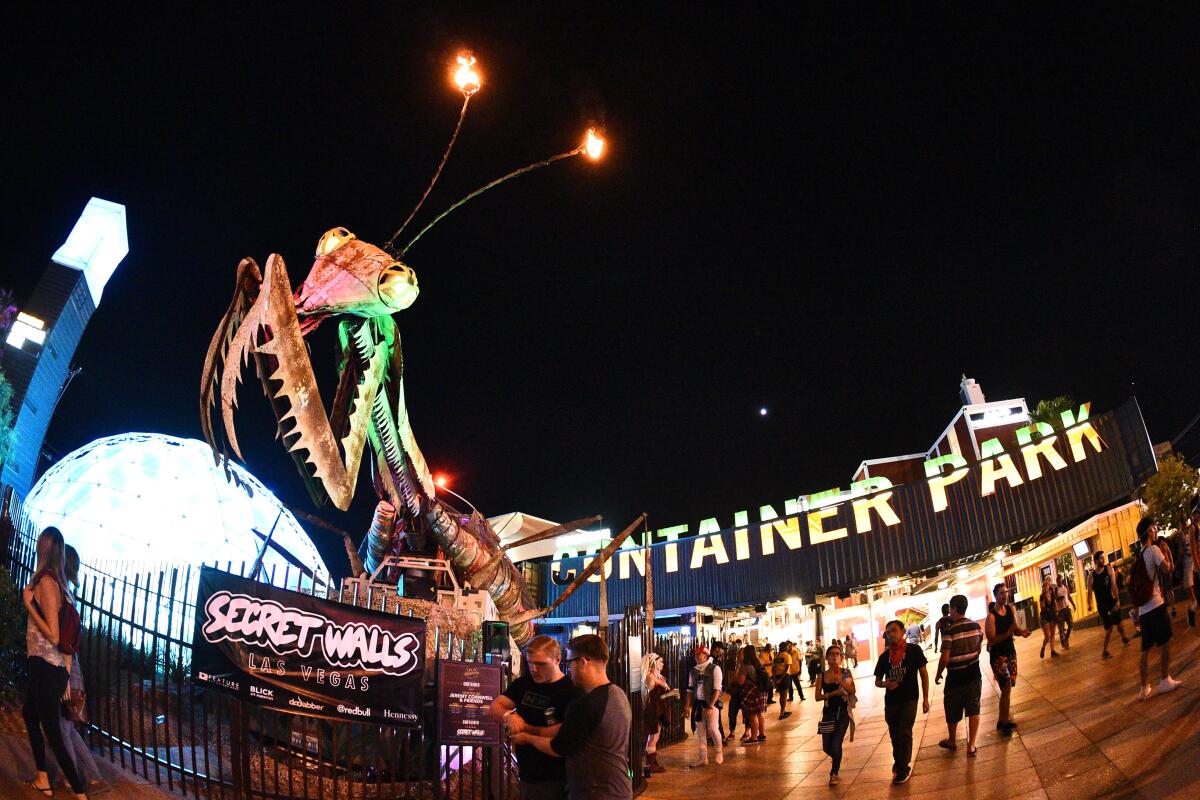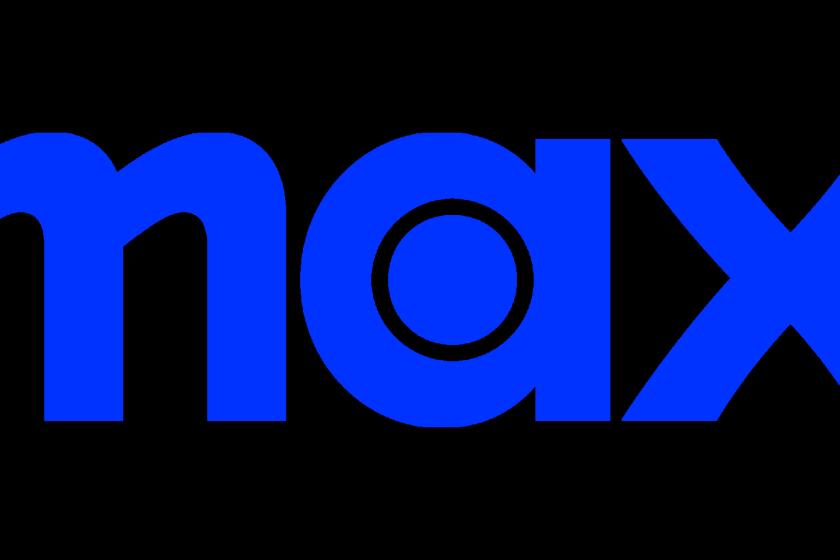Tony Hsieh is gone, but his Las Vegas vision is finding new life

- Share via
Tony Hsieh had ambitions that reached far beyond the shoe-selling business. After moving Zappos, his billion-dollar e-commerce company, to the Las Vegas suburbs and selling it to Amazon, he set his sights on transforming the city itself, pouring $350 million — mostly of his own money — into its hollowed-out downtown core, two miles north of the glitz of the Strip.
For all the attention what came to be known as the Downtown Project attracted, few of Hsieh’s grand proclamations had come true by the time he relocated to Park City, Utah, in August, having long since walked away from an active role in the initiative. Las Vegas was not the world capital of co-working or co-learning, or a new tech utopia in the desert, and vacant lots and empty buildings still peppered the neighborhood.
Hsieh died in late November at age 46 after what people close to him have described as a downward spiral of extreme behavior, but his vision lives on in his adopted home. With the pandemic making places like Las Vegas newly attractive to exactly the sorts of people and companies he struggled to attract, the seeds he planted nearly a decade ago in the desert soil are bearing fresh fruit.
Tech companies have shifted to remote work, in some cases permanently, sparking an exodus from the overheated housing markets of the West Coast. Austin has been the clearest beneficiary of this trend, with a significant tech economy already in place, but the Sun Belt as a whole is absorbing a wave of economic migrants, drawn by warm weather, low taxes and relatively affordable homes.
In Las Vegas, a city facing double-digit unemployment rates as the pandemic keeps its tourism industry shuttered, the downtown infrastructure of restaurants, parks, coffee shops and housing that Hsieh helped build is serving as a magnet for a new wave of tech talent. Ryan Smith, who works as the business development manager for the city of Las Vegas, said that the city is aggressively courting emigrants from Silicon Valley and Seattle with a targeted ad campaign and one-on-one conversations, with Hsieh’s legacy providing a key part of the pitch.
Especially for younger workers who value walkability, Smith said, “we’re talking about what Tony did for downtown — everybody knows who he is — and then how that’s kind of spilled over into other developments.”
Smith credits Hsieh’s initiative with proving that apartment buildings could be viable even in Las Vegas, a city where comfort has traditionally been equated with a sprawling mansion in the suburbs, and stimulating growth in the nearby Arts District, which is home to its own mix of bars, restaurants and shops. “When Tony decided to move downtown, that was a crazy thought at the time,” Smith said.
Despite the boom-bust cycle of the Downtown Project’s early days, workforce numbers show that tech employment in the metropolitan area has ticked steadily upward since 2011, growing at twice the rate of other sectors in a city dominated by gaming and hospitality. The goal for the city, Smith said, is to attract enough skilled tech workers that start-ups no longer have a difficult time hiring and tech giants such as Google, Facebook and Microsoft see enough of their employees moving to the area to open formal satellite offices.
A ‘city as a start-up’
Hsieh conceived of the Downtown Project at a time when he could have done anything with his life.
Raised in the Bay Area by parents who had emigrated from Taiwan, Hsieh went on to Harvard, returned to California for a stint at Oracle, and then founded an online advertising company with former classmates called LinkExchange. Two years later, he sold the company to Microsoft for $265 million.
With his new fortune, Hsieh started an investment firm and backed a budding online shoe retailer — which he helped rename Zappos — in 1999. As its chief executive, he developed an offbeat management philosophy that put company culture above all else. If employees were happy and dedicated to the company, his thinking went, then customers would end up happy too, and the profits would flow.
In addition to a pioneering free-shipping-on-returns policy, Hsieh’s attention to customer satisfaction meant hiring full-time employees to staff the customer service phone lines rather than an outside agency. In 2004, when Zappos was considering opening a new call center in Las Vegas, Hsieh instead decided to move the whole company there from San Francisco.
In 2009, Hsieh, then 35, sold Zappos to Amazon for more than a billion dollars. While he continued to lead the company, he found a new target for his attention, and growing fortune, in downtown Las Vegas.
Where most people saw a dusty husk of a business district — a patchwork of vacant lots, abandoned buildings, and dollar-ante casinos overshadowed by the big money and bright lights of the Strip two miles south — Hsieh saw a blank canvas.
Over the next four years, Hsieh poured $350 million into his vision of the “city as a start-up” through the Downtown Project. The vision was expansive: By bringing tech start-ups and small businesses into the area and fostering a culture like the one at Zappos — quirky, collaborative and focused on fun — Hsieh would create “the most community-focused large city in the world.”
He moved Zappos’ headquarters into what used to be Las Vegas City Hall and bought a block of condos in a building called the Ogden just a block away, which became the unofficial headquarters for the endeavor. He started an investment firm, the Vegas Tech Fund, to pump money into companies that would move into the zone, and whipped up a whirlwind of events and press coverage to gin up interest.

Hundreds of believers were drawn in by Hsieh — his vision, low-key charisma, penchant for partying and deep pockets. Soon there was a new restaurant, Eat, started by a woman Hsieh encountered on the sidewalk who said she’d always wanted to open a restaurant after years cooking at the casinos on the Strip; Hsieh gave her a $350,000 no-interest loan to make it happen.
A self-driving car start-up, a tech-events start-up, a bowling-betting start-up, a co-working start-up, an online polls start-up and more soon flooded into town, their teams often staying in rooms at the Ogden offered by Hsieh, backed by money from the Tech Fund. The project bought up vacant lots and built Container Park — an outdoor mall, green space and concert venue — out of old shipping containers, and placed a two-story flame-throwing praying mantis sculpture from Burning Man by the entrance.
“The doors seemed to pretty much always be open, both literally and figuratively — Tony was available,” said Rich Belsky, a Las Vegas entrepreneur whose start-up, Rolltech, was one of Vegas Tech Fund’s local investments. Belsky moved into the Ogden to take part in the project; Hsieh’s penthouse apartment played host to brainstorm meetings, parties and podcast recordings.
“Everybody was just doing everything they could to contribute to the community, to build the scene,” Belsky said. “There was just nothing like it that I had ever experienced or heard about.”
Vision meets reality
Hsieh’s sprawling ambition soon met some difficult realities. Promising start-ups failed or left town, finding it difficult to grow in a place without a deep bench of tech talent to hire. Three people associated with the Downtown Project — a start-up founder, a small-business owner and a member of the project’s planning team — died by suicide in the course of a year. In late 2014, the Downtown Project laid off 30 of its 300 employees, and a former leader of the project who quit wrote an open letter calling the endeavor “a collage of decadence, greed, and missing leadership.” Hsieh stepped down from formal leadership of the company.
Hsieh turned his management attention elsewhere — notably to an effort to eliminate traditional management entirely within Zappos and replace it with a nonhierarchical system called Holacracy, an effort that largely lost steam after a few difficult years. The Vegas Tech Fund rebranded as VTF Capital in 2016 and announced that it would no longer focus on start-ups in the city. Two years later, it made its last investment, according to industry tracker Crunchbase, and did not attempt to raise another fund.
But even if its early ambitions were not quite met, the Downtown Project went on. A lot behind a vacant motel was turned into a trailer park, and Hsieh moved out of the Ogden and into an Airstream, where he kept pet alpacas in the yard and spent nights talking around the fire pits with his neighbors.
Megan Fazio, a spokesperson for the rebranded DTP Co., said in a statement that while Hsieh was no longer involved in day-to-day operations, “he was our original visionary,” adding that the company plans to “continue to carry on his legacy and fulfill its mission of revitalizing downtown Las Vegas by investing in people, projects, and economic opportunity” on the roughly 45 acres of downtown property that it holds.
While Zappos continued to thrive, Hsieh stepped down as chief executive in August, after 20 years leading the company. In the months that followed, his life quickly unraveled.
According to accounts in Forbes and the Wall Street Journal drawing on dozens of interviews, Hsieh had taken on partying and testing the limits of his own body as his next ambitious project, and pushed himself to extremes of physical exertion, starvation and oxygen deprivation — often with the aid of nitrous oxide — at different times. He went on a house-buying spree in the tony ski town of Park City and paid friends and acquaintances to leave Las Vegas and follow him there.
“I don’t think you are well and in your right mind,” the singer Jewel, a friend of Hsieh’s, wrote after visiting him in Park City in August, in a letter obtained by Forbes. Voicing concern about his drug use, she wrote, “the people you are surrounding yourself with are either ignorant or willing to be complicit in you killing yourself.”
At 3:26 a.m. on Nov. 18, the fire department of New London, Conn., responded to an emergency call for a structure fire with a person trapped inside. Somehow, a fire had started in a small shed attached to a house where Hsieh was staying with some family and friends, with Hsieh inside. The Wall Street Journal reported that Hsieh had locked the doors himself, while operating an open flame that he used to lower the oxygen level in the enclosed space.
A week later, Hsieh died in the burn ward of a regional hospital. The state medical examiner said the cause of death was accidental smoke inhalation.
After news of his death, eulogies from thousands of friends and admirers poured out on Twitter.
Chris Sacca, an influential tech investor, captured the spirit of many of the remembrances, writing that Hsieh “might be the most original thinker I’ve ever been friends with,” a man who “questioned every assumption and shared everything he learned along the way” and “genuinely delighted in making anyone and everyone happy.”
“The earth has lost a beautifully weird and helpful person,” Sacca said.
After offering “love and condolences to Tony’s family and friends during this difficult time,” Nevada Gov. Steve Sisolak acknowledged Hsieh’s vast impact on his adopted city: “Tony Hsieh played a pivotal role in helping transform downtown Las Vegas.”
Smith, the Las Vegas business development manager, said Hsieh was an unforgettable presence in the city. Smith recalls meeting Hsieh at an event downtown in 2019, where he was shocked to see the ultra-wealthy tech executive working as a cater-waiter, circulating with a tray of short rib sandwiches for guests. He asked a friend who worked at Zappos what was going on and was told that “he believes in servant leadership.”
Paul Carr, a journalist and entrepreneur who counted Hsieh as a friend, uprooted his life to take part in the Downtown Project in its heyday and chronicled its glories and missteps in a publication started with Vegas Tech Fund financing. In terms of “this idea that it would be a capital for start-ups doing self-driving cars one day or 3-D printing or drones,” Carr said, the project was a “disaster.” But he sees it as a different kind of success.
When he last visited and saw Hsieh, he found that it “had found its own level — he had created a campus where he was surrounded by people that he enjoyed spending time with, and with his alpaca, and people would come in and do music.”
Thanks to Hsieh’s efforts, he said, “in the final analysis, downtown Vegas is infinitely better.”







